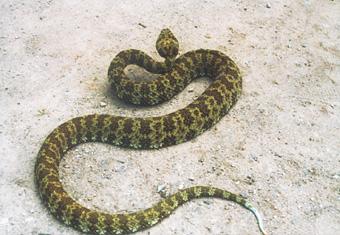
Protobothrops mangshanensis
Protobothrops mangshanensis,White-tailed snake, rare snake, small green dragon, Mangshan iron-headed snake
Features:The head is slightly triangular, slightly larger, with cheek pits, and looks like a piece of iron, hence the name.
The Latin name of the Mangshan pit viper Protobothrops mangshanensis is a giant venomous snake species unique to China, commonly known as "Little Green Dragon".The Mangshan pit viper is carnivorous. They will track their prey in a timely manner and find the right opportunity to prey. Under...
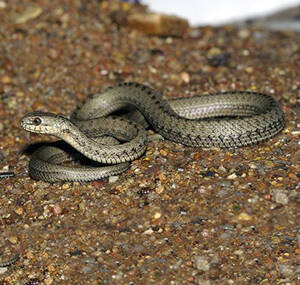
Thermophis baileyi
Thermophis baileyi,Hot Spring Snake
Features:The snake that lives at the highest altitude
The hot spring snake, whose Latin name is Thermophis baileyi, is the only snake species with the highest vertical distribution (4,350 m) in my country and is unique to the Tibetan Plateau in my country.Currently, little is known about the living habits of hot spring snakes. It is only known that it...

Varanus salvator
Varanus salvator,Common Water Monitor,Five-clawed golden dragon, monitor lizard, four-legged snake, scale insect, big four-legged snake
Features:Aggressive and ferocious. Good at swimming and climbing trees.
Common Water Monitor, with 5 subspecies.Unlike other animals, Common Water Monitor is active both day and night, but it goes out most frequently in the early morning and evening, swimming in the water or climbing up trees to find food. The round-nosed monitor has a wide range of diets, from fish, fr...
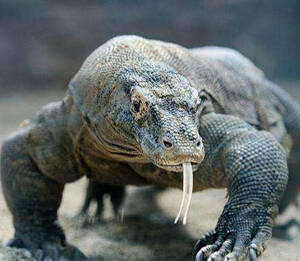
Varanus bengalensis,
Varanus bengalensis,Bengal Monitor Lizard,Common Indian monitor lizard, Bengal monitor lizard
Features:It has strong survival ability and mainly lives on the ground, but can also climb trees.
Bengal Monitor Lizard, also known as Bengal Monitor Lizard, has 3 subspecies.Bengal Monitor Lizard mainly lives on the ground and also climbs trees. Males are more active than females (males: 4.5 hours/day, females: 2.85 hours/day). The male has an activity range of 53,000m2 and the female has an ac...

Phrynocephalus mystaceus
Phrynocephalus mystaceus,Toad-headed Agama
Features:The largest species of lizard
The big-eared sand lizard is called Toad-headed Agama in English, and there are 2 subspecies.The big-eared sand lizard runs very fast, and when it encounters danger, it quickly burrows into the sand dunes and disappears. When being chased, it often keeps its body swaying close to the ground, digging...
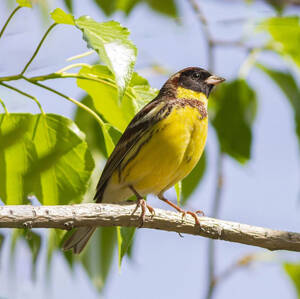
Yellow-breasted Bunting
Yellow-breasted Bunting,Yellow bile, Java sparrow, yellow belly sac, yellow bean, wheat sparrow, old ironback, golden bunting, white-shouldered bunting, yellow-breasted bunting
Features:The neck and chest are crossed by a chestnut brown band, the undertail coverts are almost pure white, and the rest of the lower body is bright yellow
Yellow-breasted Bunting is a small songbird with two subspecies.Yellow-breasted Buntings often move alone or in pairs during the breeding season, but prefer to gather in groups during the non-breeding season, especially during migration and winter, when they gather in large groups of hundreds to tho...
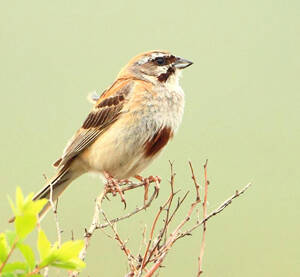
Emberiza jankowskii
Emberiza jankowskii,Jankowski's Bunting,Rufous-backed Bunting,Red-bellied Sparrow
Features:The lower body is dirty white or grayish white, with a distinct heart-shaped chestnut spot in the center of the abdomen
The foreign name of the Chestnut-bellied Bunting is Jankowski's Bunting, a small songbird with no subspecies.Most chestnut-bellied buntings wander around in winter, reaching as far as Harbin in China in the north and occasionally as far as Shenyang and Beidaihe in the south. Only a few stay in t...
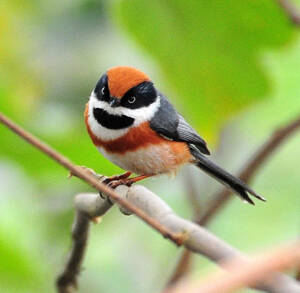
Luscinia ruficeps
Rufous-headed Robin,Luscinia ruficeps
Features:The top of the head and nape are chestnut, the chin and throat are white with black edges
The Rufous-headed Robin is a very rare endangered species.The Rufous-headed Robin sings more in May. It is very good at singing. The song is loud and melodious, like other robins. The song is loud and powerful, with a heavy guttural sound, pleasant and intermittent, with a short interlude at the beg...
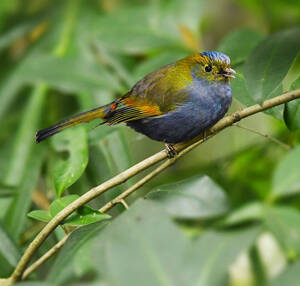
Liocichla omeiensis
Liocichla omeiensis,Omei Shan Liocichla
Features:Timid and fearful, uses different habitats in different seasons
The foreign name of the Gray-breasted Bush Babbler is Omei Shan Liocichla, and there is no subspecies.Deignan (1964) believed that the gray-breasted bush thrush may be the same species as the yellow-spotted bush thrush (Liocichla steerii) distributed in Taiwan, China. Delacour (1933, 1946) believed...
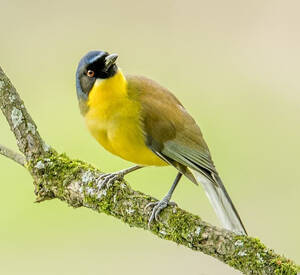
Pterorhinus courtoisi
Pterorhinus courtoisi,Blue-crowned laughingthrush,Chinese Yellow-throated Laughingthrush, Blue-crowned Laughingthrush, Wuyuan Yellow-throated Laughingthrush, Blue-throated Laughingthrush
Features:It is one of the few birds with brightly colored feathers among the thrushes.
Blue-crowned laughingthrush is a small-bodied bird of the family Timalis, with no subspecies.There are dozens of species of Laughingthrush distributed in southern China. Although there are also rare species such as Chestnut-necked Laughingthrush and Brown Laughingthrush, the Indigo-crowned Laughingt...
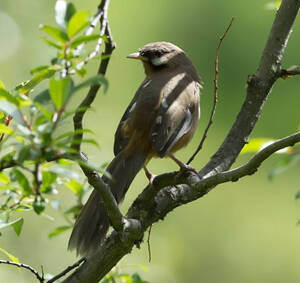
Garrulax sukatschewi
Garrulax sukatschewi,Snowy-cheeked Laughingthrush
Features:The cheek and ear feathers are white with black eye and zygomatic stripes, which are very eye-catching on the light-colored head. The nose feathers are black and cover the forehead, hence the name.
Snowy-cheeked Laughingthrush, no subspecies.Black-cheeked Laughingthrush often moves in pairs, mostly foraging in the leaf litter and moss under the forest. Male and female birds stay together all year round, and almost always move in the moss and dry leaves under the forest, never leaving the fores...
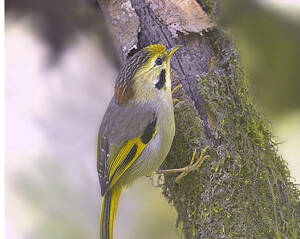
Schoeniparus variegaticeps
Pseudominla variegaticeps,Gold-fronted Fulvetta,Schoeniparus variegaticeps
Features:A smaller, brightly colored sparrow
Gold-fronted Fulvetta is a species endemic to central and southern China.Gold-fronted Fulvetta was discovered and named by Mr. Ren Guorong in 1932. It is also the first wild bird named by a Chinese, and is a milestone in the history of bird research. The origin of the golden-fronted thrush is Dayao...
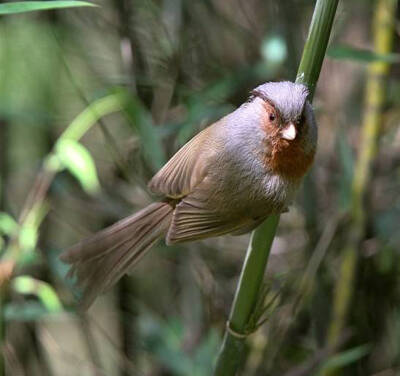
Sinosuthora przewalskii
Sinosuthora przewalskii,Rusty-throated Parrotbill,Paradoxornis przewalskii
Features:The grey feathers on the top of the head and the rest of the body contrast sharply with the reddish-brown forehead, eyeliner and brows, hence the name.
Rusty-throated Parrotbill is a small bird of the family Oriole and the genus Parrotbill, with no subspecies. The Grey-crowned Parrotbill was named by Berezovsky and Bianco in 1891 based on the specimens collected by the Russian Central Asian Expedition in southern Gansu Pro...
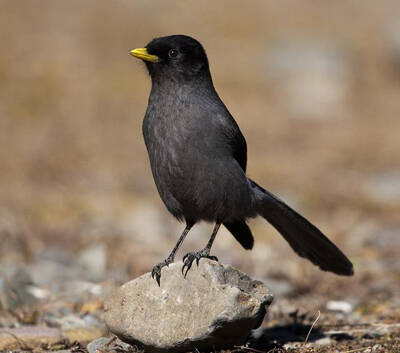
Perisoreus internigrans
Perisoreus internigrans,Black-hcoled Jay
Features:Similar in shape to a crow but smaller, endemic to China
Black-headed Jay, no subspecies.Black-headed Jay usually moves alone or in pairs. When they move in pairs, they fly in a line in the woods, one in front of the other, not far from each other, and occasionally chirp to respond to each other. The chirping sounds like "ga-a, ga-a", with the f...

Castor
Castor,Beaver, nutria
Features:The body is obese, with no obvious difference between males and females. The head is short and blunt, the eyes are small, the neck is short, the limbs are short and wide, the forelimbs are short, and the tail is large and flat.
There are only two species of beavers in the world. The other is the American beaver, which is distributed in Canada and Alaska, USA. Beavers are highly adapted to aquatic life and can move underwater for a long time. They have the habit of building dams with branches and trunks and nesting next to...

Aceros undulatus
Aceros undulatus,Rhyticeros undulatus,wreathed hornbill,Bar-pouched wreathed hornbill
Features:The call is monotonous, hoarse, and like a dog barking
The wreathed hornbill is called wreathed hornbill in foreign language, and has 2 subspecies.The wreathed hornbill often moves in small groups of 3 to 5. The call is monotonous, hoarse, and like a dog barking, and sometimes it can also make a low two-syllable sound. It appears to be rather clumsy whe...

Aceros nipalensis
Rufous-necked Hornbill,Aceros nipalensis,rufous-necked hornbill
Features:The mouth is huge and curved downwards, without a helmet
Rufous-necked hornbill is a large bird with no subspecies.Rufous-necked hornbill nests in tree holes. They often move in pairs or small groups of more than 10. They mainly feed on fleshy wild fruits such as banyan fruit.The brown-necked hornbill is a resident bird. Both males and females make a soft...

Buceros bicornis
Rodentia, Sciuridae, Flying Squirrel,Buceros bicornis,Great Hornbill
Features:The beak and casque are both large, black at the base, orange-red at the tip of the beak and the top of the casque, orange-yellow at the sides of the beak, and milky white at the lower beak.
Great Hornbill has two subspecies.Great Hornbill often moves alone during the breeding season, and likes to move in groups on tall banyan trees during the non-breeding season. When the fruits are ripe, most hornbills feed in one place until all the food is eaten. They often fly in groups, one after...

Anthracoceros coronatus
Anthracoceros coronatus,Malabar pied hornbill,Crowned Hornbill, Airplane Bird
Features:The mouth has a large helmet process, which is waxy yellow or ivory white in color. There is a significant black spot in front of the helmet process.
The Malabar pied hornbill is called Malabar pied hornbill in English, and has 2 subspecies.The Malabar pied hornbill is a resident bird. It often moves in groups except during the breeding season. It often lives and moves in trees, and sometimes forages on the ground. The call is "Gak, Gak, Gak...

Strix davidi
Strix davidi,Sichuan wood owl,Hum, cat-bird, owl
Features:Very similar to the exotic long-tailed forest owl
Sichuan wood owl, also known as Sichuan wood owl in English, is a large gray-brown owl with no subspecies.The Sichuan Forest Owl is sometimes considered a subspecies of the Long-tailed Forest Owl, but due to long-term geographical isolation from other Long-tailed Forest Owl subspecies, more and more...
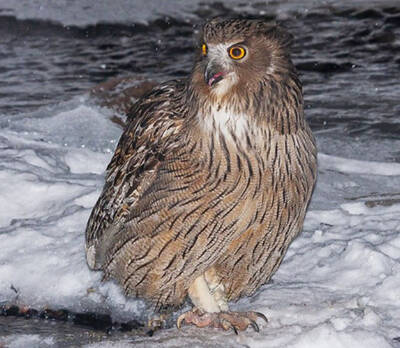
Bubo blakistoni
Bubo blakistoni,Blakiston's Eagle-owl
Features:But the ear feathers are long and pointed, the facial disc is not obvious, and it can also make a scary posture called intimidation display.
Blakiston's Eagle-owl is a large owl with two subspecies.The Hairy-legged Eagle Owl (Bubo blakistoni) was classified as Ketupa before 2014, and was classified as Bubo in 2014.The Hairy-legged Eagle Owl is nocturnal. It hides in trees by the river or on cliffs along the river during the day. It c...
